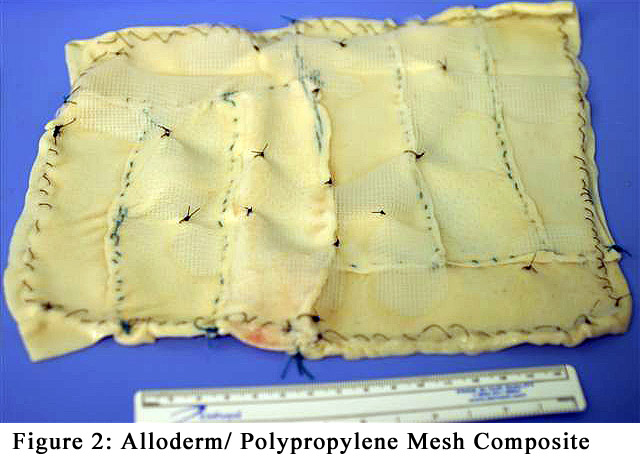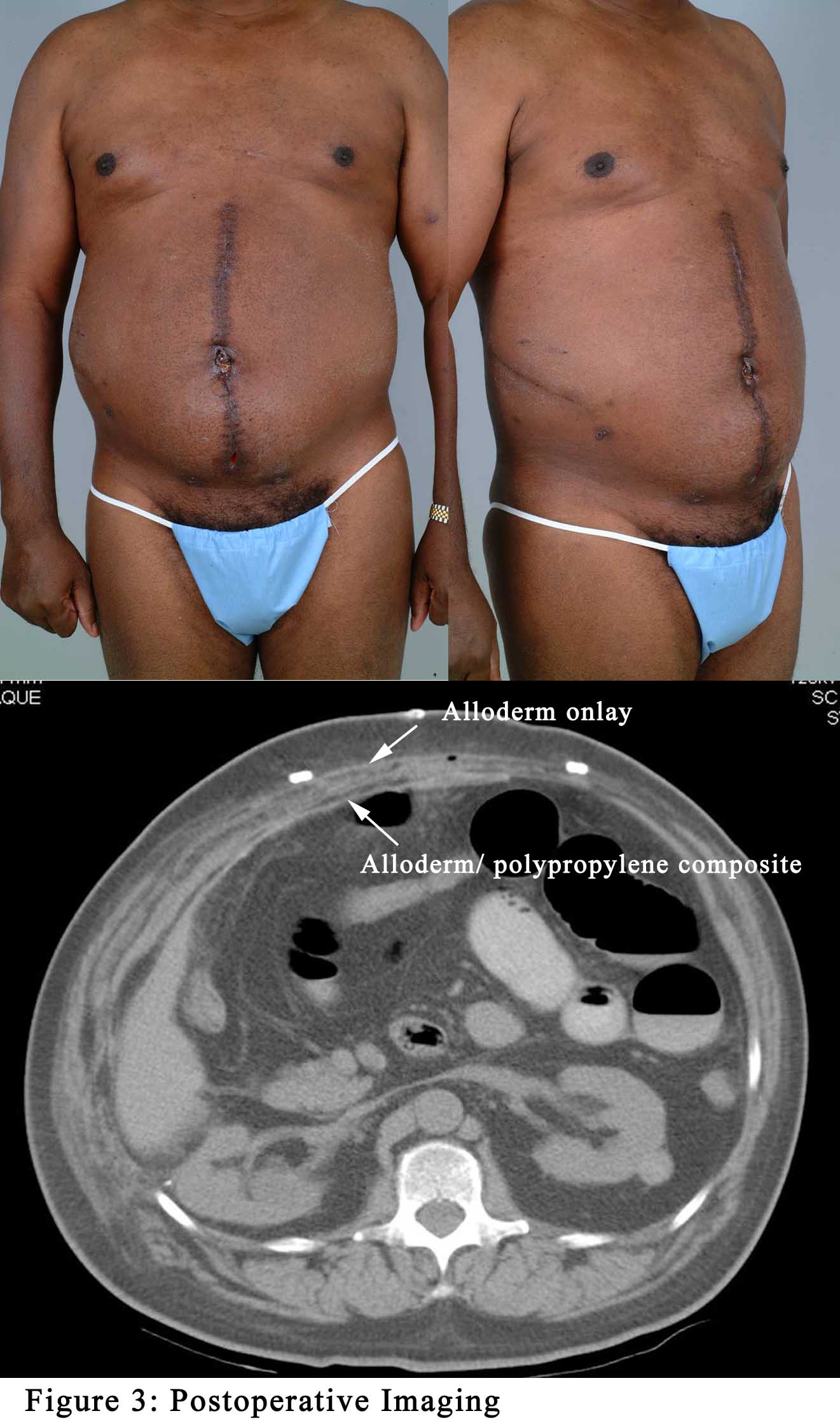25.0: Thursday, March 17, 2005
7655
Successful use of composite AlloDerm/polypropylene mesh for complex abdominal wall hernias
Complex abdominal wall hernia repairs can be approached in many ways; however, they are fraught with high recurrence rates. Newer techniques using mesh have reduced the recurrence rates but have been associated with adhesions and fistula formation. The use of acellular dermis (AlloDerm) has been touted to reduce adhesions in hernia repairs. Unfortunately, its long term strength and incorporation into the abdominal wall is unknown. Previous work by Butler and Prieto in animals has shown that a composite mesh of AlloDerm and polypropylene can become well incorporated in the abdominal wall and reduce adhesions compared to polypropylene alone. We present a clinical case demonstrating the use of an AlloDerm/polypropylene mesh composite to repair a recurrent flank and midline ventral hernia. The right flank defect measured 720 cm2 and the midline defect 1000cm2 (Figure 1). An underlay mesh composite composed of 8 pieces of AlloDerm on the inner layer and polypropylene on the outer layer was used to repair both the flank and midline hernias (Figure 2). The closure was supplemented with components separation and an AlloDerm onlay. The patient has been symptom free without recurrence for 1 year (Figure 3).



